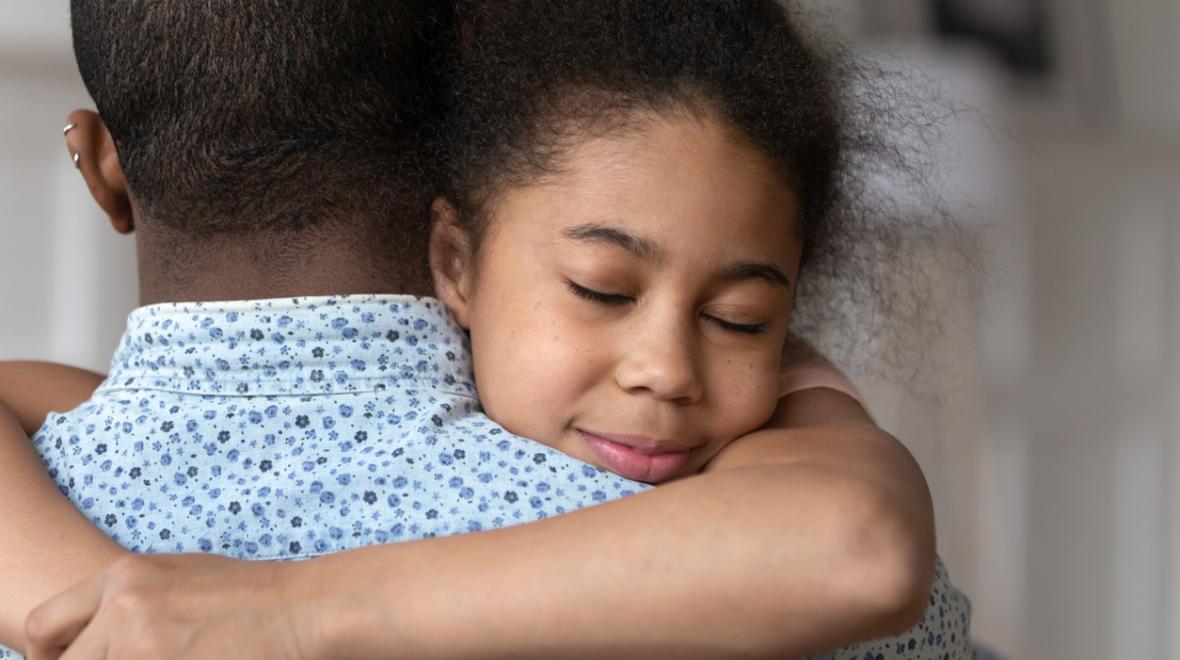
Anxiety is characterized by feelings of nervous tension, obsessive thoughts and physiological arousal, such as increased heart rate and blood pressure. As a temporary state for instigating a response to real danger — such as the threat posed by the COVID-19 pandemic — it can be adaptive. For the long haul, not so much. As Americans, we like to get over things. Bam, recover. That mindset or approach won’t be a good one for families in this case. Our ability to cope and prioritize our mental health will move us through stages of response and adjustment.
Phase one I’ll call the “SPUR” phase: shock, protest, understand, respond.
The bad news of COVID-19 shocked all of us. After a bit of protest about whether it would change our personal lives dramatically, we struggled with the idea of how wide-ranging the implications were. At some point, we understood this would be tragic for many and that we needed to take action for our families. As we began to accept the reality in erratic waves of comprehension, we started to prepare a response.
The trigger of the “fight or flight” circuit in the brain spurs us to action, so that we comply with public health directives to protect ourselves and others from virus infection. The extra energy supplied by this activated flood of adrenaline helps us figure out how to work from home, institute new policies for hygiene and homeschooling, and make plans for our family’s safety and security.
Phase two is the “LURCH” phase: lockdown prep, urgency of social distancing, risk checks, hoarding.
Here’s one family’s journey. First, the parents explain to their children that they can’t see their grandparents. They cancel their spring break vacation. They process the fact that the schools will close and they may have weeks (months?) of online learning and homeschooling ahead of them. Mom is needed at her job at a medical office; Dad boxes up his business desktop to start working from home. They move through grief, loss and panic as they consider the implications of various levels of lockdown.
The urgency of social distancing is the big rub. Mom thinks they should be able to socialize a bit with friends who are healthy. Dad has always had a more anxious temperament, and he is outraged that Mom isn’t following the social distancing recommendations to the letter. Conflict within families about policies and all the necessary changes and adaptations is inevitable.
Then the risk checks begin. The parents check the web, poll their friends and gyrate with the conflicting news reports about how long the virus survives on dry surfaces. And what do they do with the “unknown unknowns”? What does it mean that kids can be asymptomatic carriers? Will Mom bring the virus home from the medical office? Should she refuse to go? If she coughs a little, should she self-quarantine from all contact with her family in another part of the house? Do Dad’s spring allergies count as a respiratory risk?
Next comes the irrational hoarding. They already have stocked up on necessary medications and two weeks of food. However, will buying more feel better? With all the panic they’ve absorbed from the news, the most action-oriented steps at this point are “control what you can control in concrete ways.” Shop! More toilet paper? That’s silly, they think, but “if everyone is doing it, we better get some while we can!”
Families suffer a lot in the LURCH phase as they bounce between the confusing questions, decision- making and arrangements for “sheltering at home.” LURCH-ing causes emotional vertigo and insecurity.
The human mind does not like uncertainty. The anxious mind loathes it. When stuck in the spin cycle of “what ifs,” the anxious mind attempts to nail down answers about risk. One hundred percent certainty is impossible, so at some point, we make best guesses. We weigh the pros and cons of various options with realistic appraisals of risk, accept uncertainty and then make judgments that feel intuitively right for our families.
Phase three is the “COPE” phase: connection, organization, perspective, endurance.
Phase three involves a commitment to mental health and well-being for the long haul. We can derive inspiration from the people who demonstrated resilience and tenacity during WWII, the civil rights movement or any other time in our history that tested the human spirit and our capacity to cope with adversity.
Families that come out at the other end of this crisis with their health and integrity intact won’t necessarily be the wealthiest, or the ones that bugged out to cabins, or those that managed to find N95 masks. The fortunate ones will have had the resourcefulness to connect with others, organize their lives, adopt a healthy perspective and endure a very stressful extended period of time requiring many sacrifices.
Connection will involve all kinds of virtual communication. People have already shown ingenuity in initiating family Zoom gatherings, homeschooling with resources from the web, and finding remarkably creative outlets that allow them to maintain and even strengthen relationships. Virtual video connections with friends may include dance parties, dining clubs and yoga practice. And the workarounds for work meetings at home are tech miracles.
Connection will enter a whole new level of challenge if kids (and adults!) can’t exercise, play and see friends outside. “Distancing together” inside or outside requires that we prioritize our relationships as well as our health. The stats on depression, despair and anxiety suggest that social isolation can be as dangerous for our health as sedentary lifestyles, junk food and smoking.
Connection within the home needs to expand to old-school activities such as playing board games, reading together and enjoying music. We can make things — art projects, cooking from scratch, writing letters and making cards by hand. Bringing back creative traditions will be one of the upsides of this crisis.
Another form of connection is how we care for others in need and perform random acts of kindness. Perhaps we will donate to organizations that help pay bills for those losing business and income during the pandemic. Others will tutor and teach online for those who have internet access.
Innovation in ways to help others will evolve. When safety precautions are nailed down (e.g., antibody tests), healthy young people may be hired by job corps networks that haven’t been invented yet. The community needs help with child care, food deliveries and medical system maintenance. Can we have some of those trillions of dollars of government money for hiring young people, please? Teens are desperate for connection, and we need to help them be heroes in this crisis, not just inmates.
Organization refers to how we maintain routines, structure our days, and create predictability and security for our children.
Once some “herd immunity” is established, quarantine procedures will change, and families will need to figure out their responsible roles in assisting efforts for community repair. This is a character-defining moment in history that will shape us as individuals, community members, Americans and global citizens.
Organization refers to how we maintain routines, structure our days, and create predictability and security for our children. People who maintain their circadian rhythms by getting up and sleeping at the same times every day will be at a mental and physical advantage. Sleeping and exercise are top priorities for bolstering immune system health.
Routines are sacred. The sooner families implement routines for enduring this quarantine, the better. The brain becomes cued to what is called “classical conditioning” or “automatic pilot,” in such a way that a schedule serves as an unconscious trigger for performing a certain habit. The bell rings, and we know it’s time for algebra, a workout or lunch!
A schedule facilitates cooperation. Instead of fighting every day about when kids do homework and when they get to have screen time, the schedule determines when they will transition from one agenda to another, resulting in far less warfare. Call it boot camp or the beauty of ritual, but predictable structure can set us free from the anxiety about and resistance to “what’s next?”
What is good for kids is good for parents. Self-management is a great concept, but this crisis has really scrambled our brains. Families will save themselves a mountain of toil and trouble if they embrace routines.
Routines are great, and so is a break from them. Every now and then, be spontaneous! Rigidity can be as bad as chaotic permissiveness. They are the two poles of the flexibility continuum, with firm boundaries and thoughtful flexing in the middle. Why not declare a PJ day and have pancakes for dinner?
Speaking of healthy routines, there are those to include: exercise, sleep, good nutrition, fulfilling responsibilities and connecting. And there are those habits to curb, the ones that are maladaptive, such as excessive alcohol consumption, indulging in social media that makes you feel bad and paying constant attention to the news.
Whatever we pay attention to develops stronger circuits in the brain. Worrying makes the anxiety networks stronger. The news notifications on your devices trick you into thinking you need to attend to them, because they are in the business of stealing eyeball time. As grave as this pandemic is, you cannot make an argument for the need for constant news cycling. Try skipping media access for hours at a time.
Perspective refers to the fact that we can always choose an attitude toward crises. Epictetus, the Greek philosopher, is credited with saying, “It is not what happens to you, but how you react that matters.” We may feel panic, fear about the future, worry about illness, and dread that this crisis will ruin future prospects for our children and ourselves. These feelings are understandable! But feelings are not facts. They come and go, like waves, clouds or leaves floating on a stream. We can choose to accept them as natural in the course of crises. And then we can focus on the perspective we choose.
This COVID-19 crisis naturally provokes anxiety about our current and future security. We need to think about the perspective we choose and how it will impact our family’s health. To repeat: Worrying creates more worry. Focusing on solving problems and controlling what we can control empowers us.
Families can quell anxiety with experiences that generate positive emotions, such as spending time in nature, keeping a gratitude journal and recounting the joyous parts of their day.
People experiencing the same basic challenges will range tremendously in their responses to them. One person may say, “This is fantastic! We have never spent this much time together. It will challenge us to innovate. We will handle this as well as the Brits in the blitz, with optimism and a determined commitment to make the best of things. I’m glad that the majority of us who get sick will not need medical help.” Another person will say, “This is a disaster. We have lost a third of our wealth. The kids will lose ground academically and never catch up. I don’t know how we will cope with our cabin fever. How will we know if there will be enough ventilators if we get really sick?”
Personality plays a role in people’s tendency toward pessimism versus optimism, agreeableness versus negativity, as well as if they have an open mindset versus a reluctance to try new things. That said, we can all attempt to focus on living our values related to maintaining our health, loving and caring for family and friends, and helping others in need. And we need to walk the walk, not just talk the talk.
Endurance matters enormously, because the consequences of this pandemic will last many, many months. We must pace ourselves so that we have the ability to withstand unpleasant circumstances and maintain our health.
Anxiety creates wear and tear on our immune systems and makes it more likely that we will become both physically ill and mired in negative emotions. Lacking the usual outlets of community gatherings, entertainment, commerce and restaurants, our exile may turn into cabin fever and despair. Families can quell anxiety with experiences that generate positive emotions, such as spending time in nature, keeping a gratitude journal and recounting the joyous parts of their day.
People who currently practice meditation will have a leg up when it comes to coping during this crisis. Research has demonstrated the effectiveness of mindfulness methods to calm anxiety, increase positive emotions, and help us practice acceptance of self and others. Prayer and other contemplative practices also help us to calm ourselves.
Compared to resilience, endurance has been less of a focus in the coping literature. The ability to adapt to stress will be instrumental on the COVID-19 journey in 2020, but embracing endurance includes the vital acceptance of the long-term difficulties and hardships we face.
Jean-Jacques Rousseau put it this way: “Endurance and the ability to endure is the first lesson a child should learn, because it’s the one they will most need to know.”
The COVID-19 crisis will require a lot of stamina and courage for us to pull through it. It’s a basic instinct that parents want to protect their children and families. However, sometimes they don’t recognize the negative impact of chronic worry, verbalized pessimism and destructive arguing. Some of that is inevitable, and we need to accept ourselves for that, too!
Knowing the phases of adjustment to the COVID-19 pandemic and committing to the practices of good family health can help us ride the waves of fear, worry and stress. This crisis will end, but there will be others to come during this complicated thing called life. The COPE guidance is good practice for anxieties that will face us throughout our lives. We can connect, organize, plan and endure together.











